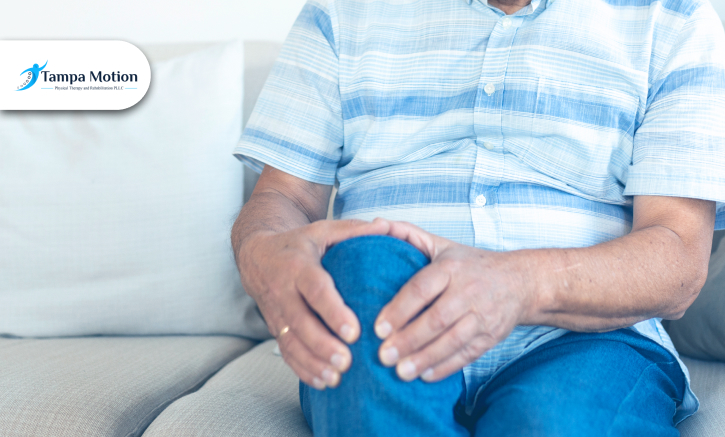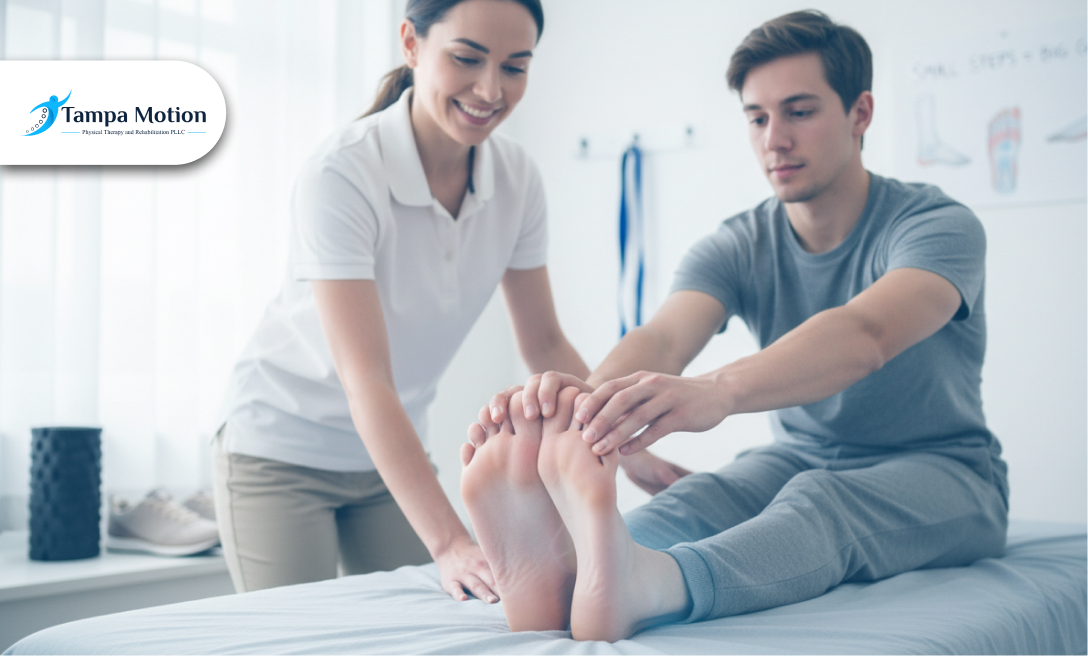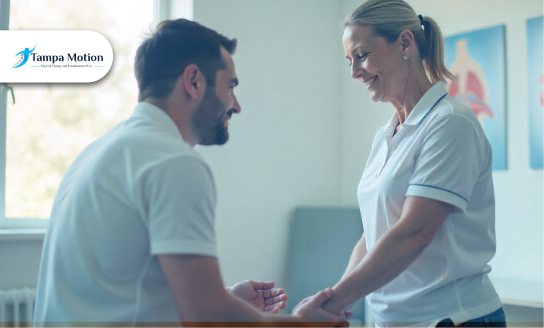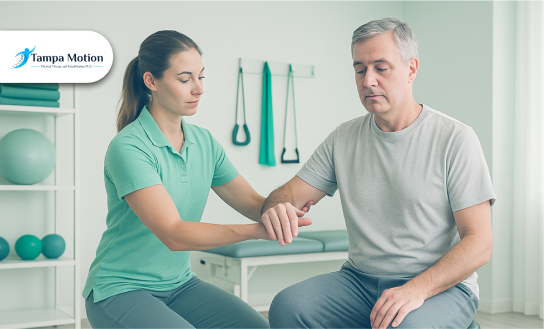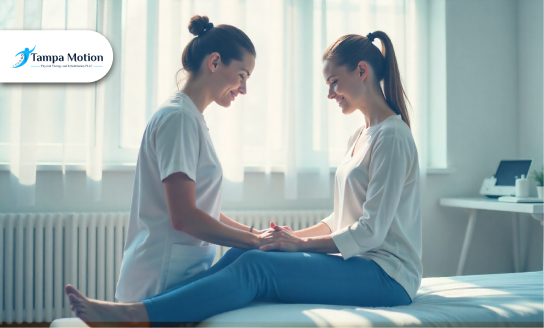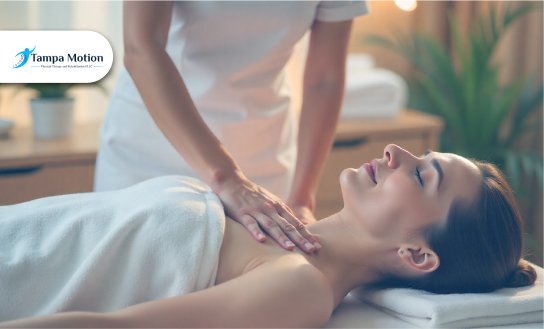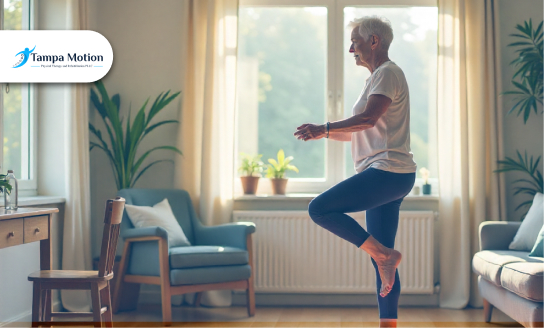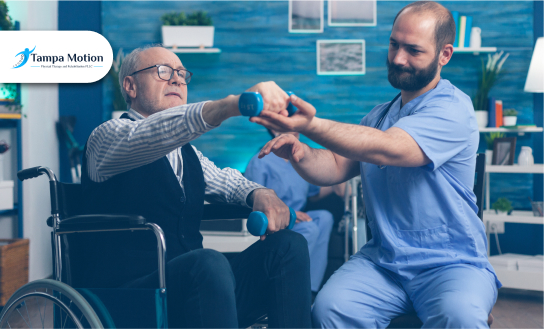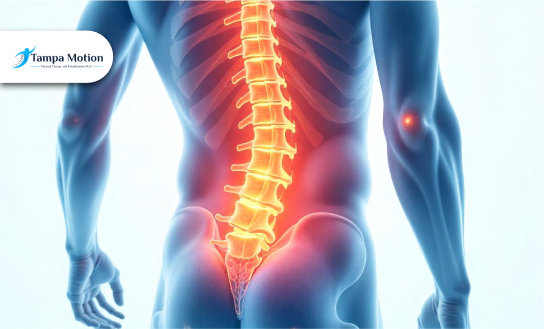
Best PT Exercises for Knee Pain Relief
July 29, 2025
Best PT Exercises for Knee Pain Relief
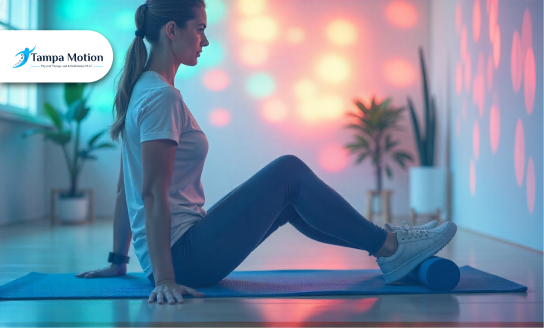
Tired of wincing every time you stand up, sit down, or walk down the stairs? You are not imagining how common and frustrating knee pain is. It disrupts your day in the most infuriating ways, whether it appeared out of nowhere or crept in gradually.
According to the CDC, one in every four adults experiences chronic knee pain. And, while it can be discouraging, there is genuine hope without resorting to surgery or shots. Physical therapy exercises can help you gain control. They're simple, low-impact, and surprisingly effective when done consistently. No gym. No weights. All you need is your body and some patience.
Let's look at the best physical therapy exercises that can actually provide relief, and no, none of them require a superhero's pain tolerance.
Why Physical Therapy Is More Than Just Exercise
When people hear the term "physical therapy," they often envision endless squats or someone pushing their leg until they cry. No, that is not it. Physical therapy is more than just random exercise; it is a personalized, science-backed plan to help your body move better and hurt less.
What distinguishes PT from other therapies? It has a specific target. A licensed physical therapist observes your movements, identifies the muscles that require support, and develops a plan specifically for you. These are not generic stretches; they are rehab moves that will help you regain strength, reduce joint strain, and move with confidence again.
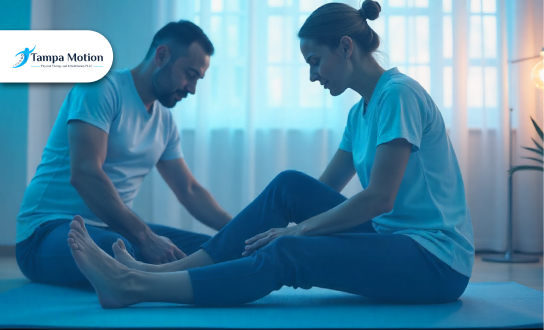
“Patients with knee osteoarthritis who completed a structured PT program were 66% less likely to need knee surgery.”
Source – New England Journal of Medicine
Compare this to surgery, which is costly, risky, and requires months of recovery. Then there's medication, which provides temporary relief however, does not address the underlying issue and frequently causes side effects.
The 7 Best PT Exercises Backed by Science
Physical therapists use these exercises on a daily basis. They are gentle, effective, and, most importantly, proven to alleviate knee pain. You won't need any special equipment; just some space, a mat or towel, and some consistency.
1. Quad Sets
Targets: Front thigh muscles (quadriceps)
Why it helps: Strengthens the quads without bending the knee—perfect if your joint feels stiff or inflamed.
How to do it:
Sit or lie down with your leg straight
Tighten the muscles on the front of your thigh
Hold for 5–10 seconds, then release
Do 2 sets of 10–15 reps
2. Straight Leg Raises
Targets: Quads, hip flexors
Why it helps: Builds strength in the muscles that stabilize your knee—especially useful after injury or surgery.
How to do it:
Lie on your back, one leg bent, the other straight
Tighten your quad and slowly lift the straight leg 12 inches
Hold for 2–3 seconds, then lower slowly
Do 2 sets of 10–15 reps per leg
3. Heel Slides
Targets: Knee joint mobility, hamstrings
Why it helps: Helps restore your knee’s ability to bend and straighten without forcing it.
How to do it:
Lie on your back with legs straight
Slowly slide your heel toward your butt, bending the knee
Stop when it feels tight—not painful
Slide back out
Do 2 sets of 10 reps
4. Hamstring Curls (Standing or Lying Down)
Targets: Hamstrings (back of the thigh)
Why it helps: Balances out the quads and reduces pressure on the kneecap.
How to do it (standing):
Stand tall, hold onto a chair or counter
Bend one knee, bringing your heel toward your butt
Hold for 3 seconds, then lower
Do 2 sets of 10–15 reps per leg
5. Step-Ups
Targets: Quads, glutes, and calves
Why it helps: Mimics everyday movements like stairs—great for real-world strength and control.
How to do it:
Use a low step or sturdy platform (4–6 inches)
Step up with one leg, then the other
Step down slowly
Keep your knee aligned, not caving inward
Do 2 sets of 10 reps per leg
6. Wall Sits
Targets: Quads, glutes, core
Why it helps: Builds endurance and joint support without dynamic movement.
How to do it:
Stand against a wall, slide down until knees are slightly bent
Hold for 10–30 seconds (start small)
Rest and repeat for 3–5 reps
7. Calf Raises
Targets: Calves and ankle stability
Why it helps: Strong calves help stabilize the entire leg chain—yes, even the knee.
How to do it:
Stand tall, feet hip-width apart
Raise heels off the ground, hold at the top
Lower slowly
Do 2 sets of 10–15 reps
These aren’t quick fixes, yet they are powerful tools. When done consistently, they retrain your body to move better, reduce inflammation, and make your knees feel stronger and more stable each day.
How Often Should You Do These Exercises?
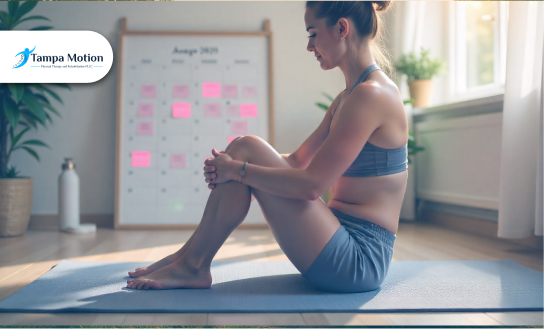
To get real relief, you do not need to work out like an athlete. In fact, doing too much too soon can be counterproductive. A steady, manageable routine is ideal
Physical therapists recommend that most people perform these exercises three to five days a week, with two to three sets of each. That is all. You are aiming for consistency rather than exhaustion.
“A 2022 meta-analysis found that exercising 3 times per week significantly reduced knee pain and improved function in patients with osteoarthritis.”
Source – Arthritis Research & Therapy
If your knees are sore or swollen, reduce your activity. Perform fewer reps. Take a day off. What matters most is that you show up again tomorrow rather than pushing through the pain today.
Consider brushing your teeth, quick, daily care goes a long way compared to the occasional deep scrub. The goal is to gradually build strength and stability rather than burn out in a week.
When to Stop and When to Call Tampa Motion
Pain does not always equal gain. Some discomfort is expected when retraining muscles, however, there is a limit. And your knee will notify you when you've crossed it. Here are some red flags that you shouldn't overlook:
Swelling that persists
Sharp or stabbing pain.
A knee that feels like it will give out
Crunching, locking, or unexpected stiffness
If you've been doing the right exercises for 2 to 3 weeks and your knee still hurts (or worsens), that's a sign. It's time to speak with someone who has a broad perspective.
“Only 30% of people with knee pain seek professional treatment in the early stages—missing the window for conservative care.”
Source – Journal of Orthopaedic Research
And that early window? It matters. Physical therapy is most effective when started before the pain becomes chronic. The sooner you receive personalized care, the quicker (and easier) your recovery.
So, if you don't see any progress, don't wait. Reach out to Tampa Motion. They are movement specialists, not pain pushers. Their job is to assist you in healing smarter, not tougher.
Relief Is Possible, You Just Need the Right Plan
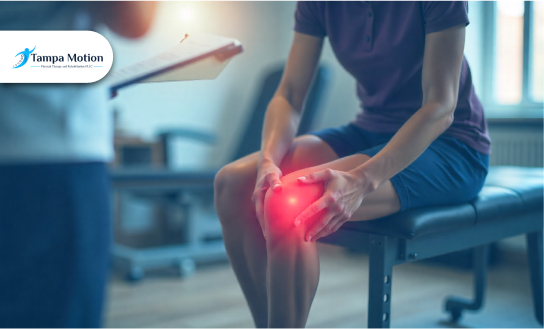
If your knee pain is interfering with your life due to arthritis, an old injury, weekend sports, or simply wear and tear, there is hope. Physical therapy can be customized to address your specific pain, body, and lifestyle. There are no one-size-fits-all strategies here.
Whether your knees ache while climbing stairs or flare up after a jog, the right movements, done correctly, can restore strength, reduce inflammation, and restore confidence in your steps.
The Tampa Motion team understands this. They do not only treat knees; they also treat people. They will work with you one-on-one to develop a recovery plan that is tailored to your needs, not those of others.
Book a no-obligation physical therapy consultation and take the first step toward pain-free movement.
Recent Blogs
